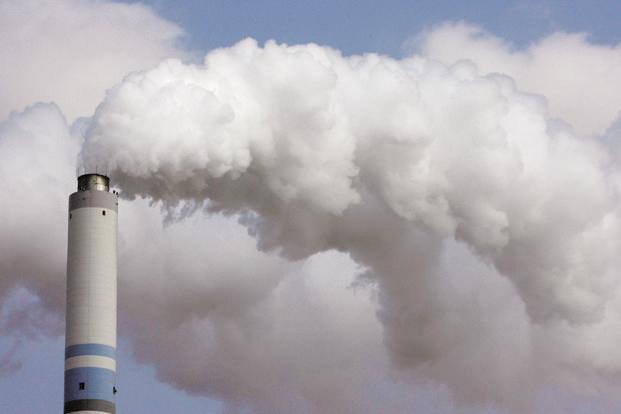According to new figures, a surge in atmospheric carbon dioxide (CO2) saw levels of greenhouse gases reach record levels in 2013.
Concentrations of CO2 in the atmosphere between 2012 and 2013 grew at their fastest rate since 1984.
The World Meteorological Organization (WMO) says that it highlights the need for a global climate treaty.
The WMO’s annual Greenhouse Gas Bulletin doesn’t measure emissions from power station smokestacks but instead records how much of the warming gases remain in the atmosphere after the complex interactions that take place between the air, the land and the oceans.
About half of all emissions are taken up by the seas, trees and living things.
According to the bulletin, the globally averaged amount of carbon dioxide in the atmosphere reached 396 parts per million (ppm) in 2013, an increase of almost 3ppm over the previous year.
“The Greenhouse Gas Bulletin shows that, far from falling, the concentration of carbon dioxide in the atmosphere actually increased last year at the fastest rate for nearly 30 years,” said Michel Jarraud, secretary general of the WMO.

Atmospheric CO2 is now at 142% of the levels in 1750, before the start of the industrial revolution.
However, global average temperatures have not risen in concert with the sustained growth in CO2, leading to many voices claiming that global warming has paused.
“The climate system is not linear, it is not straightforward. It is not necessarily reflected in the temperature in the atmosphere, but if you look at the temperature profile in the ocean, the heat is going in the oceans,” said Oksana Tarasova, chief of the atmospheric research division at the WMO.
The bulletin suggests that in 2013, the increase in CO2 was due not only to increased emissions but also to a reduced carbon uptake by the Earth’s biosphere.
The scientists at the WMO are puzzled by this development. That last time there was a reduction in the biosphere’s ability to absorb carbon was 1998, when there was extensive burning of biomass worldwide, coupled with El Nino conditions.
“In 2013 there are no obvious impacts on the biosphere so it is more worrying,” said Oksana Tarasova.
“We don’t understand if this is temporary or if it is a permanent state, and we are a bit worried about that.”
“It could be that the biosphere is at its limit but we cannot tell that at the moment.”
The WMO data indicates that between 1990 and 2013 there was a 34% increase in the warming impact on the climate because carbon dioxide and other gases like methane and nitrous oxide survive for such a long time in the atmosphere.
For the first time, the bulletin includes data on the acidification of the seas caused by carbon dioxide.
Every day, according to the WMO, the oceans take up about 4kg of CO2 per person. They believe the current rate of acidification is unprecedented over the last 300 million years.
The evidence of the atmosphere and oceans underlines the need for urgent, concentrated political action to tackle the problem says Michel Jarraud.
“We have the knowledge and we have the tools for action to try keep temperature increases within 2C to give our planet a chance and to give our children and grandchildren a future,” he said.
“Pleading ignorance can no longer be an excuse for not acting.”
The world’s political leaders will gather in New York on September 23 for a special summit called by UN secretary general Ban Ki-moon.
The hope is that this meeting will kick-start longstanding negotiations that aim to deliver a new international climate change by the end of 2015.
The exact legal nature of this agreement is still the subject of contentious debate.


